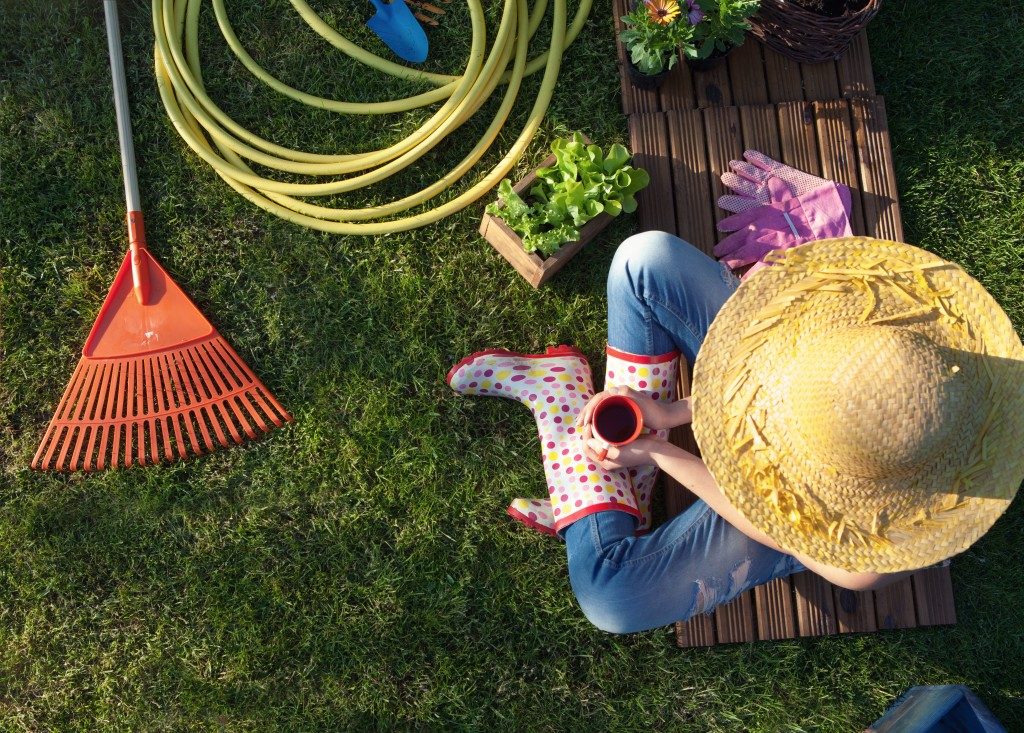Cleaning your garden is essential to its general upkeep. Moreover, it’s vital to retain the beauty and lushness of your foliage. Accordingly, various resources claim that spring is the best season for a garden cleanup project. While spring is still a long way to go, it pays to be prepared.
If you’re relatively new to gardening or simply want to make the task easier, here are some tips that can help you:
Start by removing obvious trash
After winter has passed and the ground is free of snow, it’s time to start inspecting your yard to pick up unwanted items such as litter, wood waste, and plant debris like fallen twigs and branches.
For safety purposes, be sure to wear a pair of thick gloves. It’s also important to stay observant as you might pick up sharp objects like glass shards and other broken materials. Remember, never postpone debris removal for your post-winter cleanup, as leaving waste in the ground can restrict the growth of new grass.
Rake your lawn carefully
Next, grab a rake and work on ridding your garden of remaining plant debris, such as twigs, dead leaves, pinecones, and rotten seeds. Do this thoroughly, as failure to eliminate all perishable materials can increase the likelihood of snow mold. It’s also a must to have a bright and clean canvas to work with if you plan to have new plants.
Remove mulch
Check the roots of your plants and remove any mulch that has stayed throughout winter. Next, using scissors or garden shears, cut off all dead stalks and leaves on your perennials. Then, meticulously pull out your dead annual plants that need to be replaced. You can put some fertilizer on your thriving perennials by placing a portion of compost around the roots, but be sure that all mulch has been removed before application.
Prune and trim

Pruning and trimming are intricate tasks, and there are particular sets of guidelines that you have to follow for specific types of plants, such as evergreen and semi-evergreen perennials, trees, and shrubs, and woody plants and flowers. You can get instructions from credible resources. Additionally, you must avoid cutting living buds. However, if pruning seems too complicated and labor-intensive for you, you can hire professional services.
If you live in Western Australia, you can find a garden cleanup service in Perth, Mandurah, Bunbury, or Albany. Do a quick online search or ask your neighbors for recommendations. You can even hire a team to help you with piling and organizing wood waste to be sent to recycling facilities.
Cut back your ornamental grasses
It’s indispensable to cut your ornamental grasses as soon as it’s already doable. Accordingly, you can begin when the grasses have grown within several inches off the ground. There’s no need to wait for new growth before you start cutting.
Inspect your gardening tools
Landscaping tools such as your lawnmower and hedge trimmer should be checked thoroughly to ensure that they are in optimal condition. The blades should still be sharp and free of rust, cracks, and other visible signs of wear and damage.
Have your shed repaired
Inspect your shed and look for any damages that need speedy repair. If you plan on having a new shed built or installed, spring is the ideal time for it. Consult a contractor and do some research on the necessary materials and conventional installation methods.
Overall, your garden keeps your property visually pleasing. Hence, it’s essential to keep it beautiful by establishing and following a maintenance and cleaning routine.
